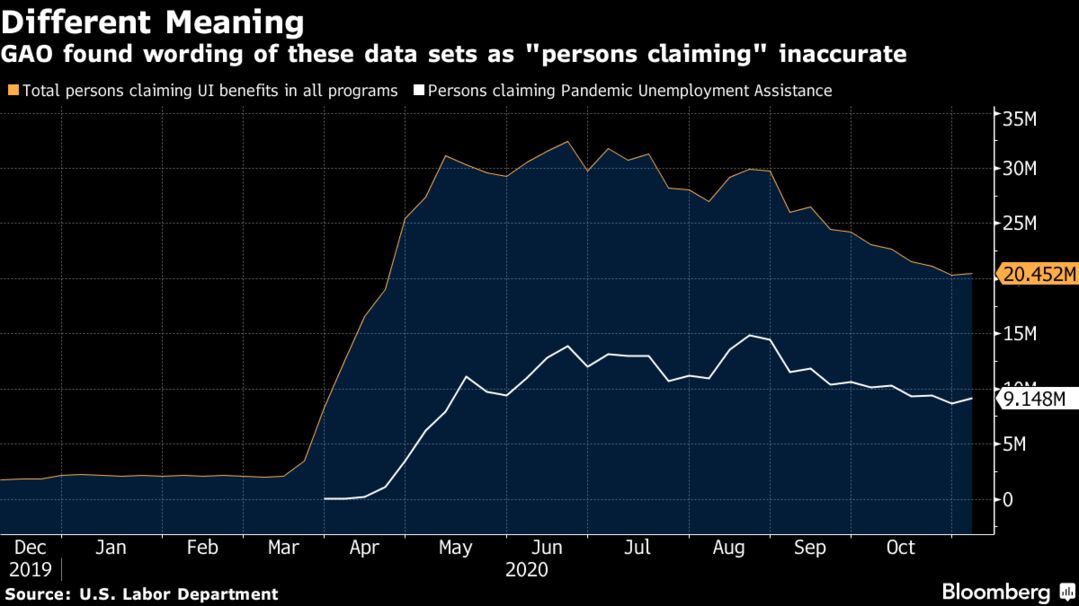The closely watched weekly reports on U.S. claims for unemployment benefits will soon come with a disclaimer that the figures aren’t accurately capturing how many people are actually claiming benefits after a government watchdog found the figures to be “flawed.” The Labor Department “plans to clarify in its weekly news releases that the numbers it reports for weeks of unemployment claimed do not accurately estimate the number of unique individuals claiming benefits,” the U.S. Government Accountability Office said in a report Monday.
The latest jobless-claims report said 20.5 million people were claiming benefits across all unemployment insurance programs in the week ended Nov. 7. This figure includes programs ranging from regular state unemployment insurance to special pandemic programs providing extended benefits and help for those not traditionally eligible for unemployment assistance.

But if a person files for six weeks of benefits in a given week, for example, that’s typically counted as six separate people in the total, instead of one person. The GAO report said this method of counting is normal for the Labor Department, and before the pandemic provided a good proxy for the actual number of people claiming benefits.
For example, the number of continued claims submitted in the Pandemic Unemployment Assistance program through June 27 exceeded the number of people who had submitted an initial claim by nearly 20 million, a GAO analysis of 20 states’ data showed.
The accuracy of both regular state and PUA figures have been impacted by double counting, but multi-week claims “are especially prevalent in the PUA program,” the GAO wrote in the report. The Labor Department “improperly represented the number of unique individuals claiming UI benefits and the changes in these numbers from week to week,” the GAO said.
